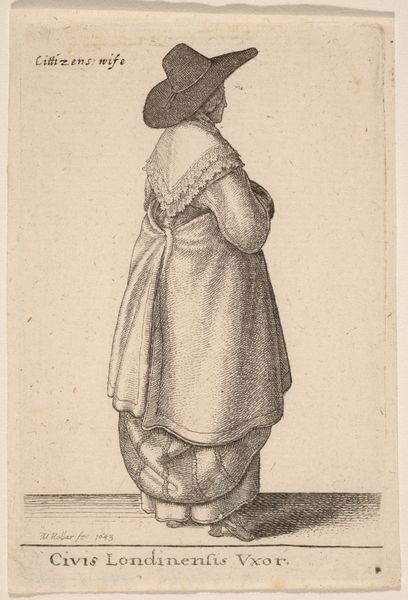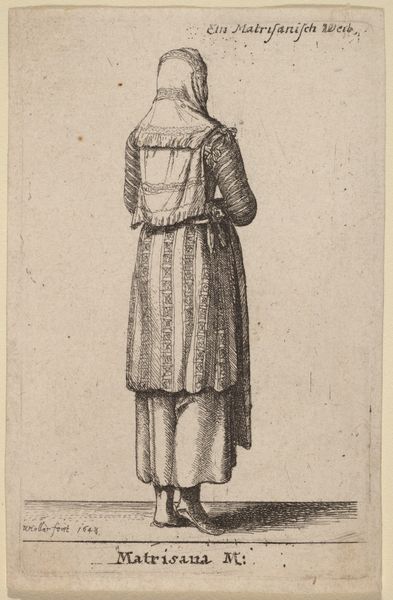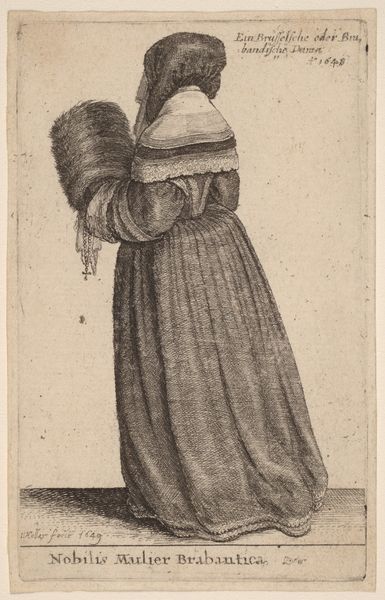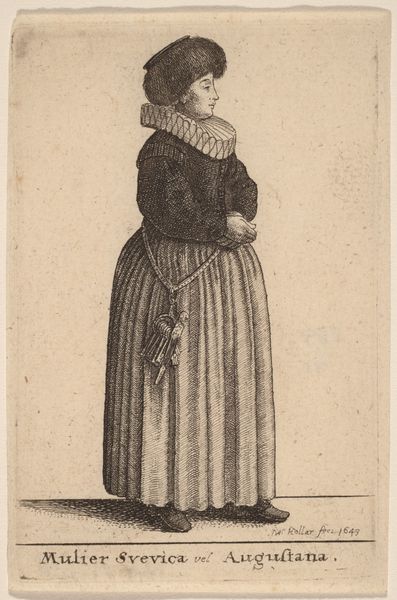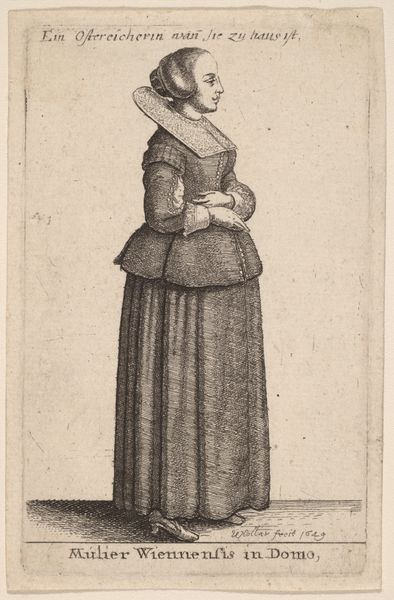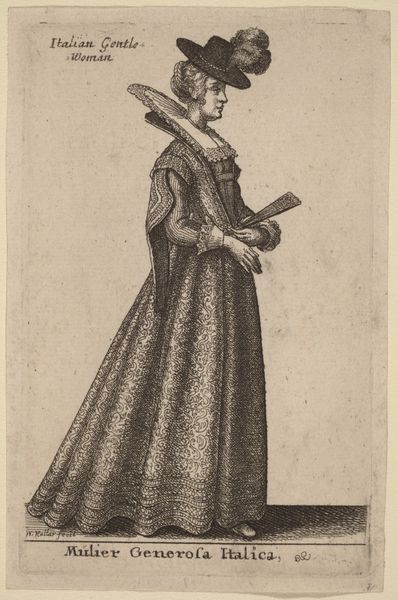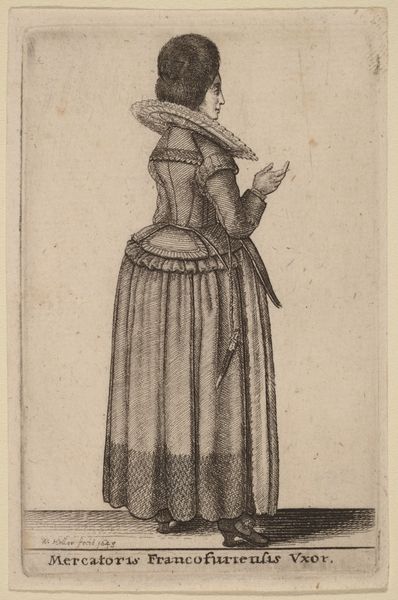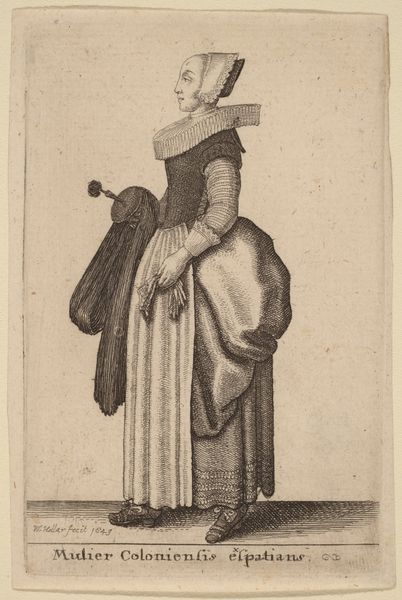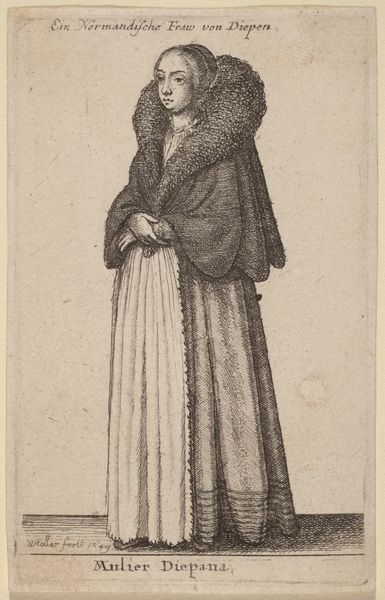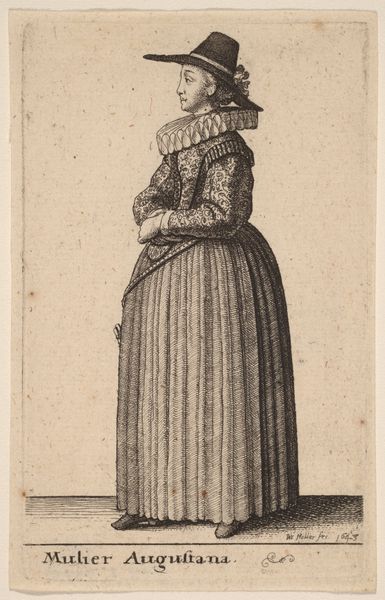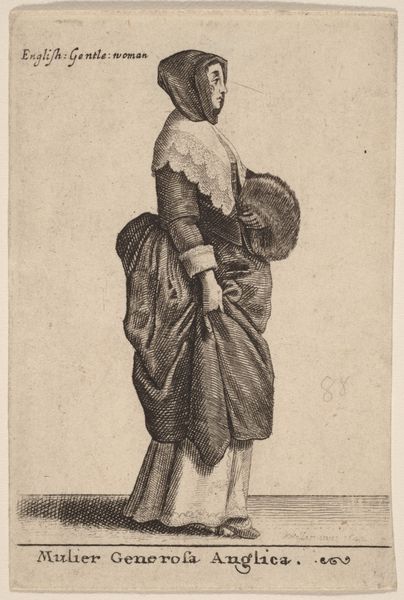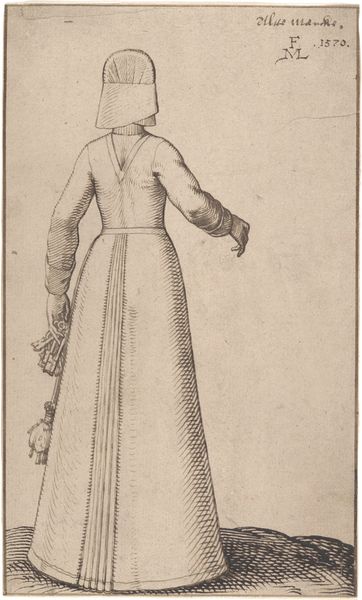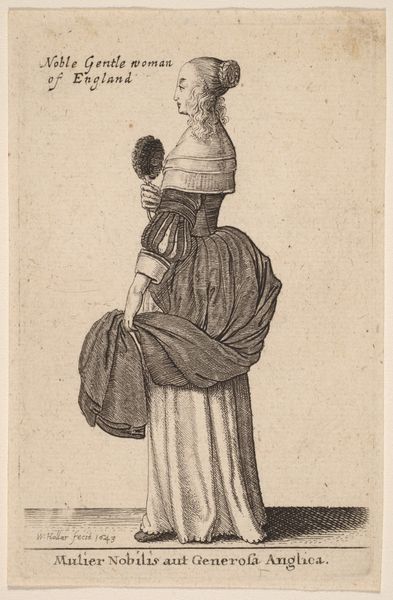
drawing, print, etching, paper
#
portrait
#
drawing
#
baroque
# print
#
etching
#
paper
#
genre-painting
Dimensions: 91 × 58 mm (sheet, trimmed just outside platemark at left and within platemark at top, right, and bottom)
Copyright: Public Domain
Wenceslaus Hollar created this print, *Hungarian Woman*, in 1643 using etching, a process that democratized image-making. Unlike engraving, where lines are laboriously cut into a metal plate, etching uses acid to do the work. The artist covers the plate with a waxy ground, then scratches through it with a needle, exposing the metal. When the plate is immersed in acid, the exposed lines are eaten away, creating grooves that hold ink. This relatively quick method allowed for the wider distribution of images, fueling a growing market for prints. Hollar was celebrated for his meticulous depiction of details, particularly of garments. Here, the texture and pattern of the woman's clothing are carefully articulated, giving us a glimpse into the material culture of 17th-century Hungary. Though the image is small, the labor involved is significant, and the result is a testament to the power of printmaking to capture and disseminate cultural information. By focusing on the materials and processes, we see how this artwork bridges the gap between fine art and craft, reflecting broader social and economic shifts.
Comments
No comments
Be the first to comment and join the conversation on the ultimate creative platform.
